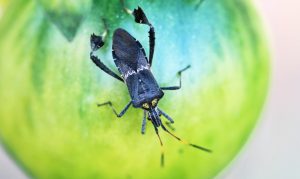
Source: (Futurity)
When plants come under attack, internal alarm bells ring and their defense mechanisms swing into action—all in just a few minutes.
Now, scientists are the first to image in real time what happens when plants fight off an attack and how they respond to disease and damage.
Crops under stress
“Understanding how plants respond to mechanical damage, such as insect attack, is important for developing crops which cope better under stress,” says Malcolm Bennett, professor of plant science at University of Nottingham.
Researchers focused on the plant hormone jasmonic acid, which is part of the plant’s alarm system and defense mechanism. Jasmonic acid is released during insect attack and controls the response to damage. Disease can also trigger jasmonic acid—so it’s a general defense compound.
“We have created a special fluorescent protein—Jas9-VENUS—that is rapidly degraded after jasmonic acid is produced,” Bennett says. “This allowed us to monitor where jasmonic levels are increased when the fluorescent signal is lost.”
For the study, published in Nature Communications, researchers used a blade to mimic the damage an insect would do by feeding on a leaf.
With the fluorescent protein they were able to image how damage to a leaf quickly results in a pulse of jasmonic acid that reaches all the way down to the tip of the root, at a speed of more than a centimeter per minute.
WOUNDING SIGNAL
Once this hormone pulse reaches the root it triggers more jasmonic acid to be produced locally, amplifying the wounding signal and ensuring other parts of the plant are prepared for attack.
“Jasmonic acid triggers the production of defense compounds like protease inhibitors to stop the insect being able to digest the plant proteins—the plant becomes indigestible and the insect stops eating it.”




